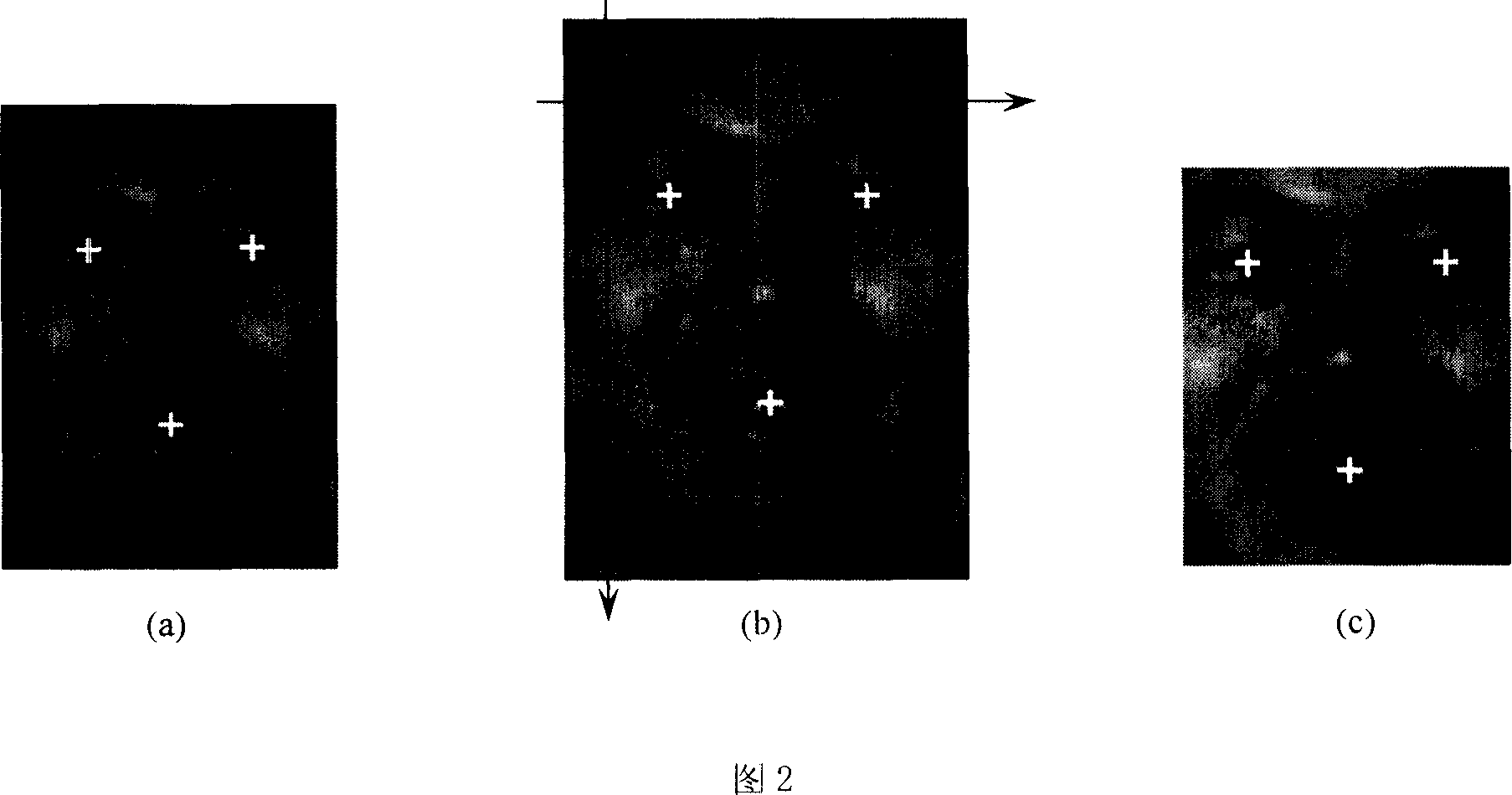Human face identifying method based on structural principal element analysis
A technology of face recognition and principal component analysis, which is applied in the field of face recognition to achieve the effect of facilitating programming and reducing space complexity
- Summary
- Abstract
- Description
- Claims
- Application Information
AI Technical Summary
Problems solved by technology
Method used
Image
Examples
Embodiment Construction
[0032] specific implementation plan
[0033] Taking the FERET face bank as an example, the implementation process of the present invention is described. There are 1209 pictures of people in the original FERET database, with a total of 14051 images. Select some frontal faces in the FERET face database as training and testing samples, and finally select 70 people, each with 6 pictures, a total of 420 pictures constitute the training and testing sample set. The implementation process is as follows:
[0034] Step 1: Image Preprocessing
[0035] Image preprocessing includes light compensation, histogram equalization, gray scale normalization, etc. After preprocessing, the light distribution of all images is unified to the standard level, eliminating the impact of light differences on face recognition.
[0036] (1) Light compensation
[0037] Since the face recognition method based on PCA is sensitive to light changes, whether the light distribution on the face is uniform has a ...
PUM
 Login to View More
Login to View More Abstract
Description
Claims
Application Information
 Login to View More
Login to View More - R&D
- Intellectual Property
- Life Sciences
- Materials
- Tech Scout
- Unparalleled Data Quality
- Higher Quality Content
- 60% Fewer Hallucinations
Browse by: Latest US Patents, China's latest patents, Technical Efficacy Thesaurus, Application Domain, Technology Topic, Popular Technical Reports.
© 2025 PatSnap. All rights reserved.Legal|Privacy policy|Modern Slavery Act Transparency Statement|Sitemap|About US| Contact US: help@patsnap.com



